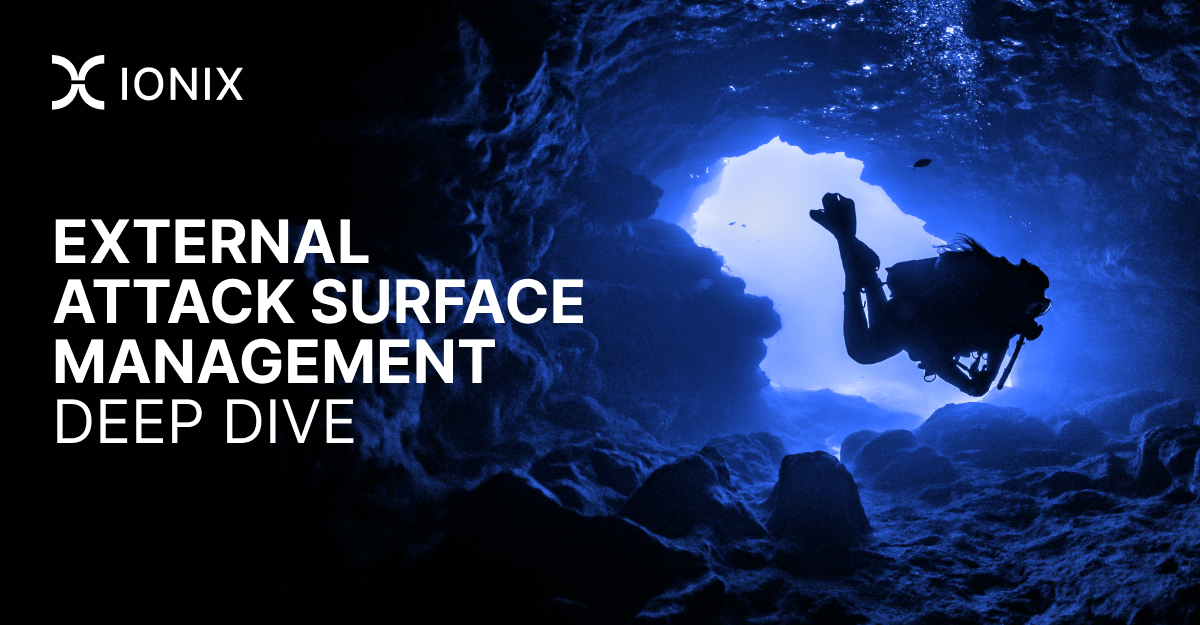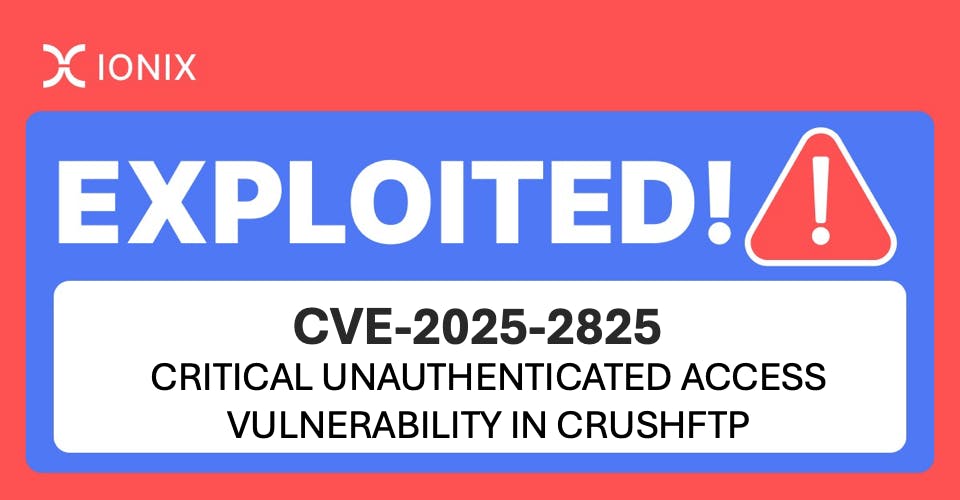A Deep Dive Into External Attack Surface Management

We live in a time where the integrity and security of an organization’s digital infrastructure are essential in earning customer confidence and trust. This trust, however, is increasingly under siege due to a surge in cyberattacks exploiting overlooked or inadequately managed internet-facing assets.
Organizations’ growing online presence are under an ever-increasing risk of cyber threats . As businesses embrace digital transformation, their attack surface expands, encompassing not only known assets but also shadow IT and third-party services. This complexity makes it challenging to identify, manage, and mitigate risks effectively.
Gartner forecasts that by 2026, organizations focusing their security spending on a CTEM (Cybersecurity Threat Exposure Management) program will achieve a reduction in breaches by two-thirds. Taking the attacker’s point of view and starting Gartner CTEM with EASM(External Attack Surface Management)provides an impactful first step towards this goal. By adopting a comprehensive EASM cybersecurity strategy, businesses can proactively discover and monitor their internet-facing assets, prioritize vulnerabilities based on exploitability and organizational context, and swiftly remediate potential threats. So, let’s understand what the hype is all about.
In this article
What is an External Attack Surface?
An external attack surface refers to the sum of all the different points where an unauthorized user or malicious actor can potentially gain access to or breach an organization’s network, systems, software, or digital platforms from the outside. Your organization’s external attack surface includes all of your known and unknown internet-facing assets. This includes everything from domain names, SSL certificates, and protocols to operating systems, servers, IoT devices, and network services scattered across on-premises and cloud environments.
Furthermore, Your external attack surface also extends to the complex web of connections and infrastructure that makes up your digital supply chain. Each component of the digital supply chain, down to the code level, provides potential entry points that threat actors relentlessly scan for vulnerabilities to exploit.
Internal vs External Attack Surface
| Internal attack surface An internal attack surface is visible to those within the organization. The pieces that make up this attack surface are more within the control of the organization. It has always existed, and though it has become more complex, it is more manageable than an external attack surface because of the level of control over it. Examples of vulnerabilities here include misconfigured cloud resources, overly permissive access controls, and mismanaged non-human identities. | External attack surface An external attack surface is visible to those outside the organization. The organization has little to no control over this attack surface. This is because other organizations like vendors, partners, and suppliers have shared control over this attack surface. It is a new challenge facing organizations and is growing exponentially with every passing year. Examples include instances of malware, phishing, hacking, and automated bots that attack the organization from the outside and try to gain entry into the system. |
What Are The Challenges Around External Attack Surface Management
Navigating the external attack surface is nearly impossible with the traditional tools at our disposal. Here’s why:
- Increased reliance on third parties: As organizations integrate more deeply with partners, suppliers, and SaaS providers, their attack surface extends to those entities’ security postures as well. Third-party risk is difficult to assess and mitigate without insight into vendors’ external assets and exposures.
- Unidentified exposures and vulnerabilities: Limited attack surface visibility allows vulnerabilities in internet-facing assets to go undetected. Misconfigurations, unpatched systems, and unknown exposures provide entry points for threat actors to exploit. Automated tools generate high volumes of exposure data that is difficult to parse and prioritize.
- Distributed IT ecosystems: With assets scattered across on-premises networks, cloud environments, subsidiaries, and third-party vendors, organizations often lack centralized visibility and control over their external attack surface. Siloed teams and tools further compound this fragmentation.
- Shadow IT: As organizations’ priorities change so do the applications they rely on. However, in the process of creating and retiring applications and the various components, frameworks, and libraries they rely on, much of these assets get orphaned, and are out of sight. They still exist in some form, but are just not visible to the organization. Attackers are eager to find these unused assets and use them as attack paths into the core parts of the system. In fact, 57% of SMBs have shadow IT assets operating outside of the IT team’s approval.
- Emerging technologies: ‘Change is the only constant’ – and this is more true in the world of technology. As older technologies give way to newer ones, new attack vectors and attack paths are introduced with them. The attack surface is changing with these technologies, and so should attack surface management strategies and tooling. However, organizations are unable to keep pace with the rapid changes and leave gaping holes in their external attack surface.
The Rise of the External Attack Surface
In the past, the dominant cyber security strategy was defending the perimeter of internal networks with firewalls and detect and response solutions. Today, the perimeter has all but evaporated. Threat actors don’t need to breach the perimeter? Instead, they can focus on weakly secured connected assets or unmanaged ShadowIT. Connected assets that are unknown or outside the organization’s IT environments present a growing challenge to security teams. Assets deployed beyond this edge represent an external attack surface that can be used to target your organization.
This new digital footprint is far more expensive than the internal one, often by several orders of magnitude, as the interactions between employees, consumers, and businesses are increasingly happening online via web-based services and applications. The growth of this footprint has accelerated as enterprises undertake significant digital transformation initiatives. These projects require new digital assets, many of which reside outside the firewall, are hosted on public cloud infrastructures, or are deployed in mobile app stores.
For example, consider a large retail company that decides to launch a new e-commerce platform to expand its online presence. The platform is built using a combination of in-house and third-party services, including a content delivery network (CDN), a payment gateway, and a customer relationship management (CRM) system. Each of these services introduces new assets to the company’s external attack surface, such as web applications, web servers, and databases. If any of these assets contain vulnerabilities, they could be exploited by attackers to exfiltrate sensitive data or disrupt the company’s operations.
Additionally, the development of these services and applications often incorporates the products or capabilities of third-party vendors of services, code, infrastructure, or data. It doesn’t stop there. Many of those third parties have built their functionality on top of that of their vendors’. These third, fourth, and ‘Nth’ parties provide assets that are also part of your external attack surface, whether you know about them or not.
What is External Attack Surface Management?
External attack surface management cybersecurity discipline was created in the wake of COVID-19, when the remote workforce and accelerated cloud adoption also brought on unparalleled risks due to internet exposure.
EASM refers to the processes and technology necessary to discover external-facing assets and effectively manage the vulnerabilities of those assets. Examples include servers, credentials, public cloud misconfiguration, and third-party partner software code vulnerabilities that could be exploited by malicious actors. EASM’s core tenet is to take an outside-in view of the enterprise to actively identify and mitigate threats that exist beyond the perimeter. Essentially, you are viewing your organization through the eyes of an attacker.
How Does Attack Surface Management Work?
Given the potential damage to a company as a result of cyberattacks, many organizations are now incorporating external attack surface management platforms into their enterprise risk management strategies. As such, security teams are opting for more proactive approaches where known and unknown risks, vulnerabilities, and assets are handled strategically versus reacting to incidents ad-hoc.
For security teams to achieve this, here is the step by step external attack surface management process:
- Attack surface discovery — External attack surface mapping initiates with the discovery of an organization’s externally accessible assets, extending to its digital supply chains. This process involves using a combination of passive and active scanning techniques to identify known and unknown assets, including those managed by third parties.
- Monitoring — Continuously scan and monitor external attack surface, including cloud services and on-premises infrastructures, to identify changes to the attack surface and new risks. Regular monitoring ensures that the organization has an up-to-date view of its external attack surface and can quickly detect and respond to emerging threats.
- Analysis — Evaluate and analyze asset attributes to determine if they are misconfigured, vulnerable, or behaving anomalously. This includes conducting a recursive assessment to identify risky connections, where external risks to connections and assets that put your asset at risk. By analyzing asset attributes, organizations can identify potential weaknesses and prioritize remediation efforts.
- Prioritization — Utilize a multi-layered prioritization approach that takes into account factors such as severity scores, exploitability, and blast radius. This helps organizations prioritize risks based on their potential impact and the likelihood of an attacker successfully exploiting the weakness.
- Correlate Threat Intelligence – Integrate data from Digital Risk Protection Services (DRPS) to identify leaked credentials and exposed machines in your inventory. By correlating this threat intelligence with the discovered attack surface, organizations can identify assets that may be at higher risk due to exposed credentials or other compromising factors.
- Remediation — Provide actionable plans for mitigating prioritized threats and implement a remediation workflow that integrates with existing security tools and processes. This may include generating tickets, triggering incident response procedures, or automating remediation tasks through security orchestration and automation solutions. Streamlining the remediation process helps organizations more effectively address risks across their external attack surface.
- SOC enablement — EASM empowers an organization’s security operations center (SOC) to identify security misconfigurations, and attack vectors in external-facing assets so they can respond to those threats before a bad actor gets wind of them. There is a need to prioritize issues and respond based on priority, but EASM gives you the visibility to observe all assets and their vulnerabilities, which precedes prioritization.
How is EASM different from CAASM and CSPM?
The end-to-end attack surface of an organization is vast and complex and requires multiple approaches and strategies to be fully protected. External attack surface management protects external-facing assets that are exposed to the internet and anyone outside the organization. Cyber asset attack surface management (CAASM) is wider in scope. It protects both internal and external-facing assets. However, CAASM aims to be more comprehensive and wider in view, while EASM aims to be detailed and in-depth with a laser focus on external assets.
Cloud security posture management (CSPM), on the other hand, is about securing an organization’s posture in the cloud. It excels at understanding the relationship between various cloud services and revealing attack vectors in the cloud. While there is some overlap between these essential approaches to attack surface management, their differences and focus areas make them complementary.
Uses Cases for External Attack Surface Management
There are many use cases for external attack surface management that range from compliance to third-party risk management. Let’s look at each of them.
- Compliance & governance – Compliance and governance is not a one-time achievement, but an ongoing process. EASM enables organizations to stay compliant and govern their entire external-facing digital supply chain. This starts with discovering every asset at the start and giving the SOC an exact count and includes continually discovering new assets as they are added. It requires monitoring decommissioned assets to ensure they do not become shadow IT.
- Secrets exposure – External attack surface management spots secrets exposures that can lead to privilege escalation, data theft, and a host of other security nightmares. It can alert in real-time and give you a critical headstart in responding to a security emergency.
- Vendor and partner-related risks – EASM covers the entire digital supply chain of an organization. This includes all third-party organizations and their applications that can be easily overlooked because of the lack of control and visibility into them.
- Mergers & Acquisitions-related risks (M&A) – External attack surface management is cognizant of organizational hierarchies and is able to classify a parent organization and its various subsidiaries. Knowing which domain of an organization an asset belongs to is essential when responding to external threats.
EASM tools and techniques
EASM involves multiple tools and techniques to be implemented in a way that each builds on the others. Here are the key tools and techniques involved in EASM:
- Web application scanners – Web applications, as the name suggests, are internet-facing by default, and are prime examples of external assets that need to be monitored and secured. They are vulnerable to cross-site scripting (XSS), SQL injection attacks, and broken authentication and access control.
- Network scanners – The networking layer is essential for service-to-service communication between an organization’s various assets whether internal or external. It is prone to attacks like DDoS, malware, social engineering, and phishing attacks. Weakly configured ports can give attackers easy access to the organization’s internal assets.
- Threat intelligence platforms – An essential part of cybersecurity, a threat intelligence platform (TIP) gathers information on vulnerabilities such as malware and makes it available to the SOC. They can use this information to plan a coordinated response to potential threats.
- Vulnerability management systems – It involves identifying, and prioritizing vulnerabilities based on data from threat intelligence sources, and scanning tools. Once prioritized, the vulnerabilities are remediated in the right order from top to bottom.
These tools and techniques address the various attack vectors, and close attack paths that lead from the external attack surface to the internal attack surface of an organization. The external attack surface is sometimes ignored, but as you can tell any compromise in this layer will lead directly to the internal attack surface.
How to choose an Attack Surface Management platform?
Choosing an external attack surface management tool requires careful evaluation to ensure it comprehensively identifies and monitors the organization’s exposed assets and vulnerabilities. As organizations grapple with the challenges of managing their ever-expanding external attack surface it becomes clear that a siloed approach to cybersecurity is no longer sufficient. To effectively mitigate risks and protect their digital assets, organizations must adopt a holistic and integrated approach to attack surface management (ASM).
EASM, which focuses specifically on identifying, prioritizing, and mitigating risks associated with internet-facing assets, is a critical component of the broader ASM discipline. However, it cannot be effectively implemented in isolation from the rest of the organization’s cybersecurity efforts.
Download the IONIX Attack Surface Management Checklist!
Ionix’s role in EASM
IONIX is a leading provider of external attack surface management solutions, offering a comprehensive platform that empowers organizations to proactively identify risks from the attacker’s point of view, monitor them, and mitigate them across their ever-expanding digital footprint.
IONIX’s external attack surface management SaaS platform features a robust attack surface discovery engine, which continuously monitors and identifies internet-facing assets and their digital supply chains. This provides organizations with a dynamic, up-to-date view of their external attack surface. By exposing critical threats and vulnerabilities, IONIX enables security teams to prioritize remediation efforts based on exploitability, threat intelligence, and business context. This approach ensuresthat the urgent and important issues are addressed first. Additionally, IONIX offers Active Protection that can automatically mitigate risks like domain hijacking without manual intervention.
All in all, IONIX provides a holistic solution to a distributed problem that will help reduce the risk of costly data breaches and protect your reputation as you go increasingly digital.






